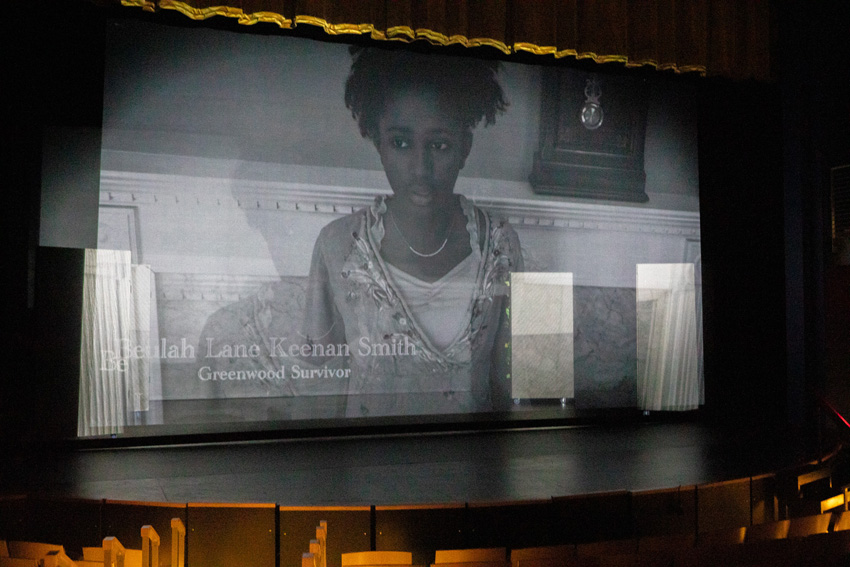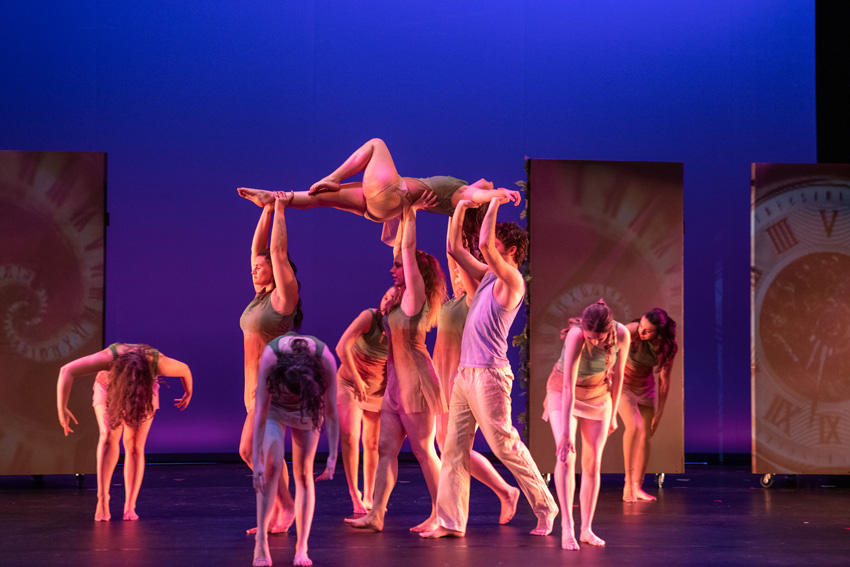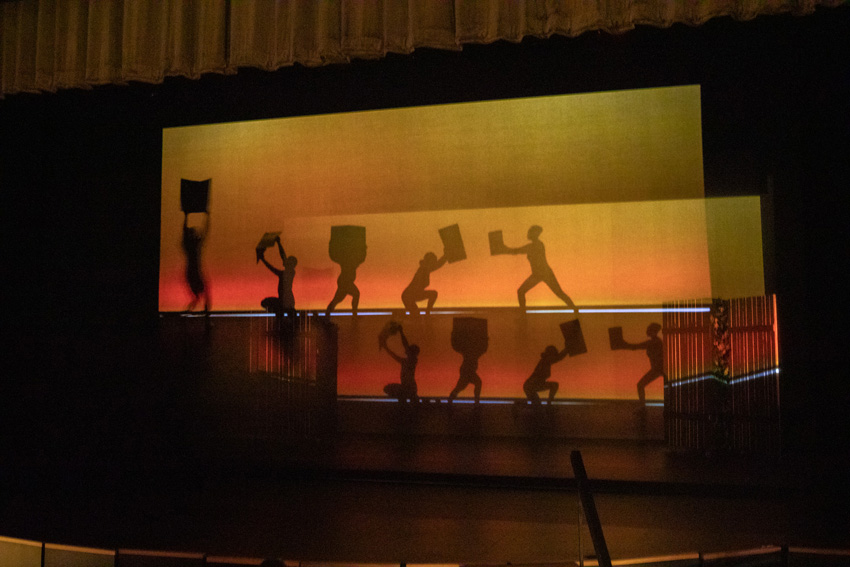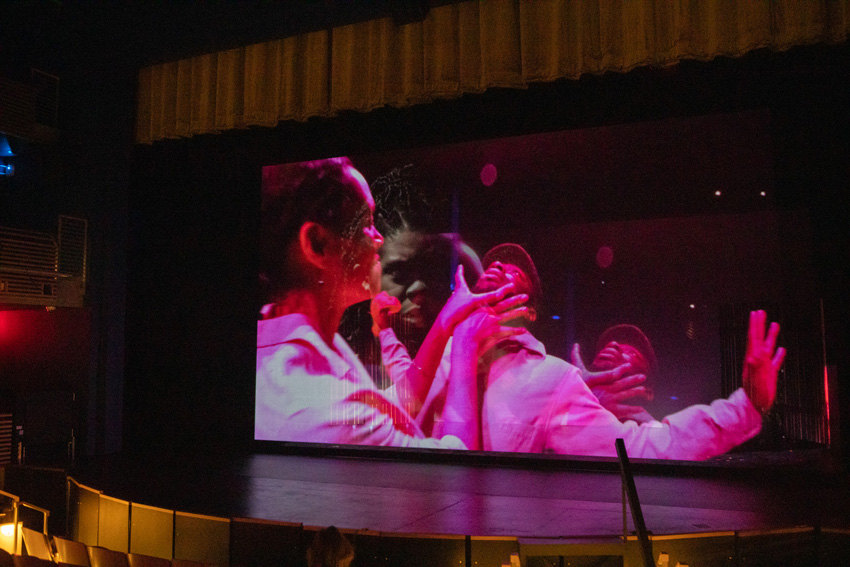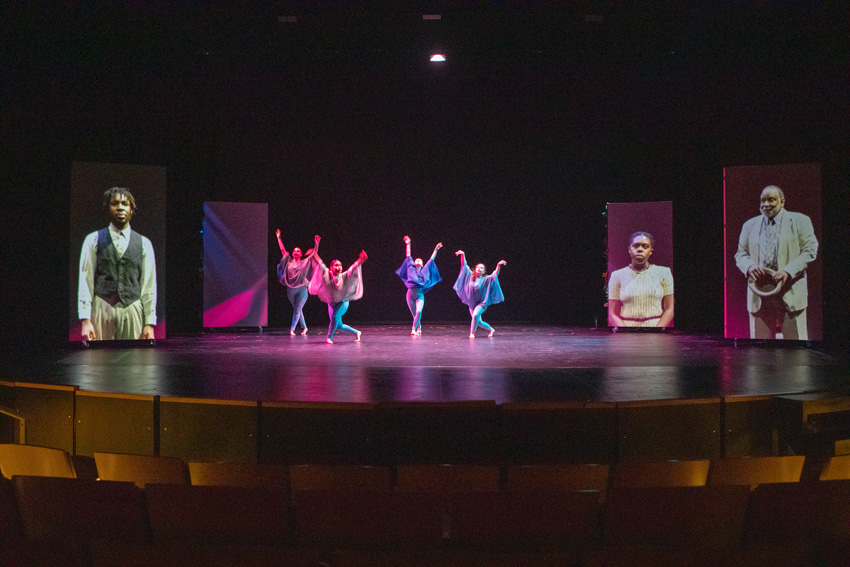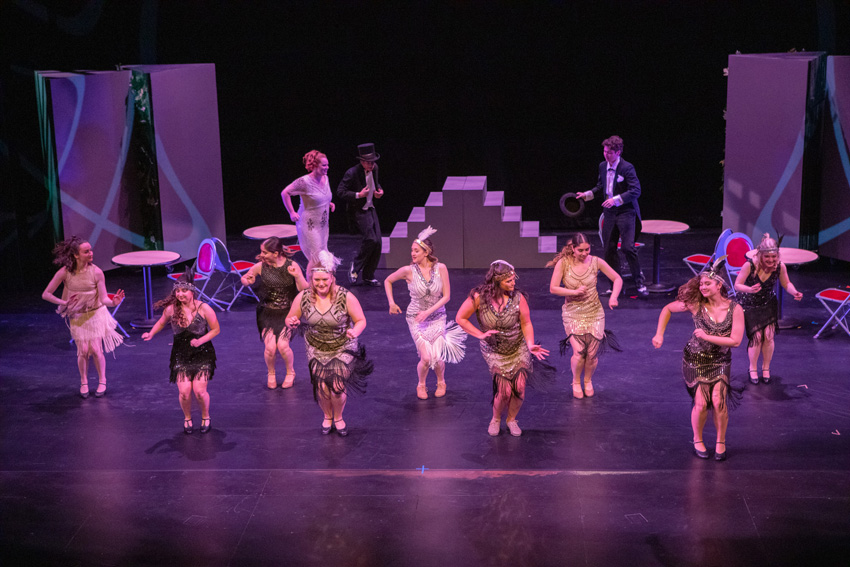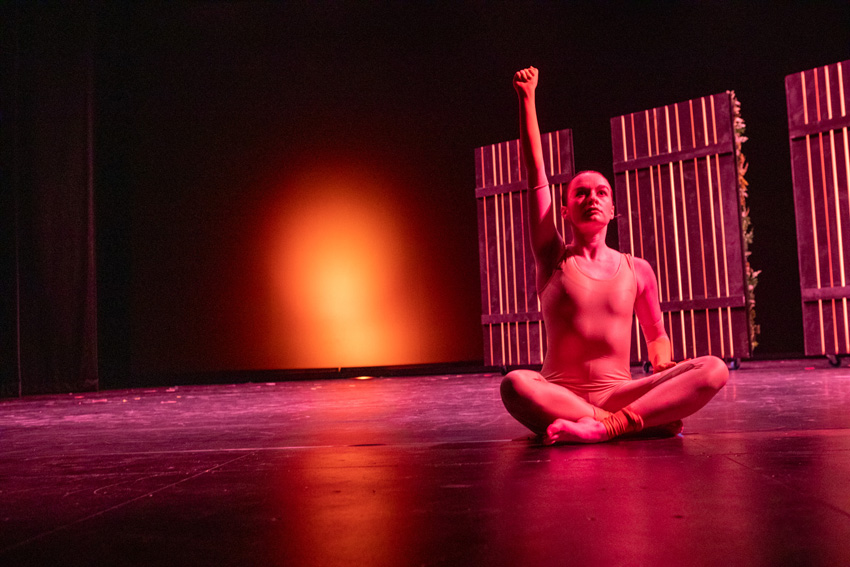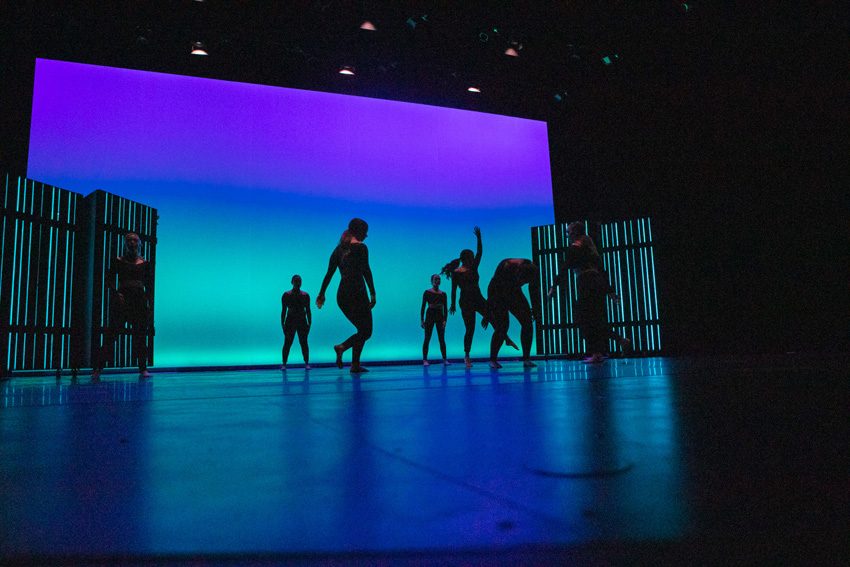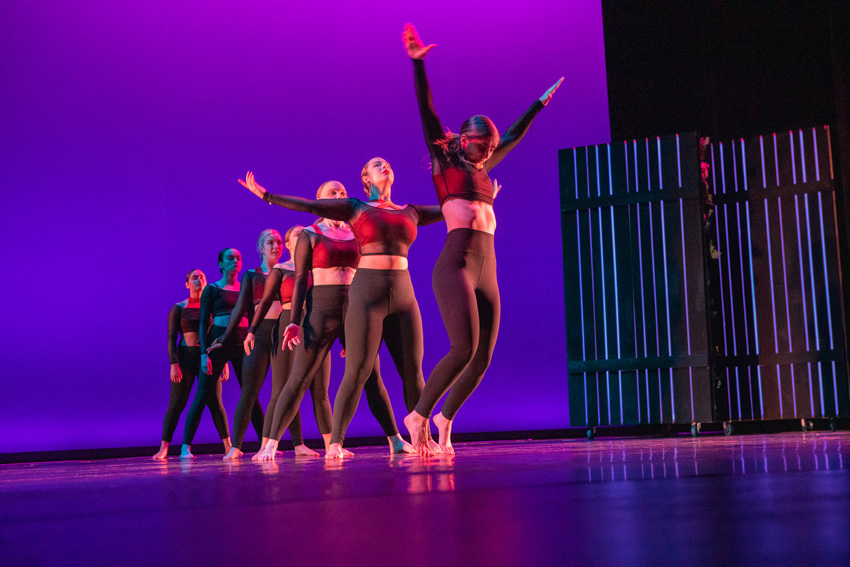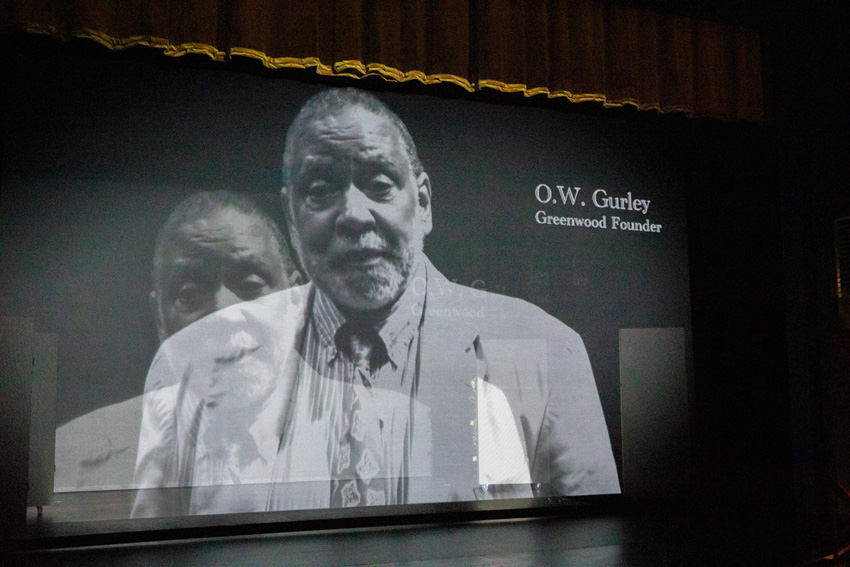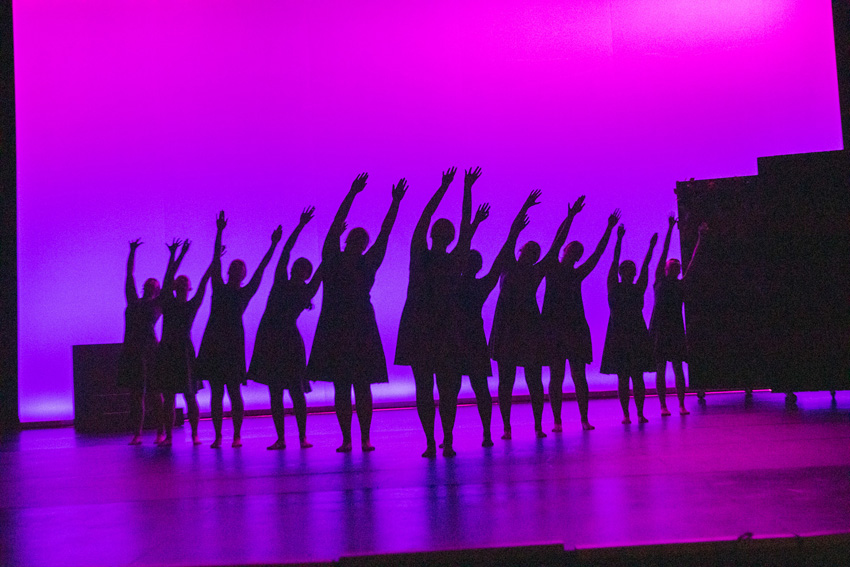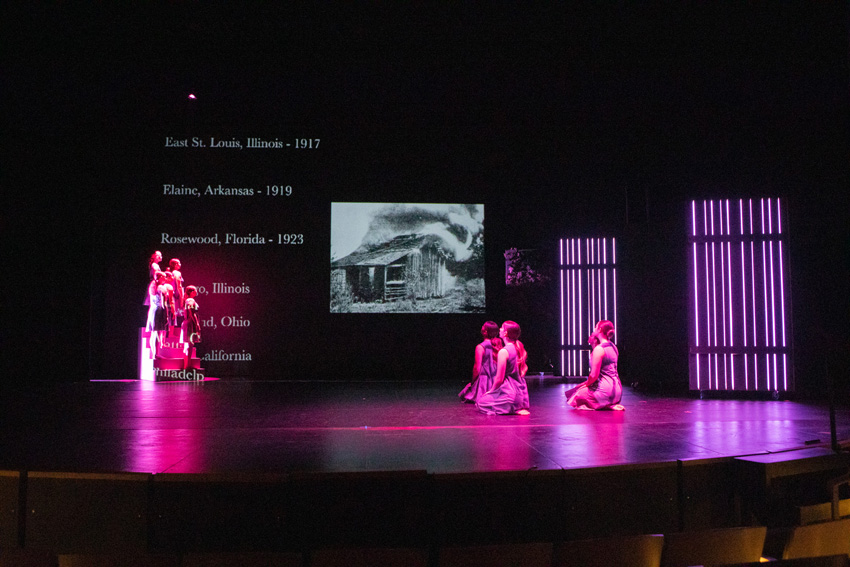- Apply
- Visit
- Request Info
- Give
Theatre collaboration 'The Greenwood Project' memorializes Tulsa Race Massacre
Written by Molly Boucher
Published on May 04, 2022
In remembrance of an oft-forgotten historical atrocity, the Theatre Program at Eastern Connecticut State University presented “The Greenwood Project: Against Erasure” from April 28-May 1. The production highlighted the Tulsa, OK, neighborhood of Greenwood and memorialized the loss of life and cultural capital caused by the Tulsa Race Massacre of 1921. Combining live dance, film, acting and poetry, the show also celebrated the achievements of African Americans in the early 1900s.
Directed by Theatre Professors Alycia Bright Holland and Brian Day, the production showcased student dancers and choreography, with many students taking on production roles in the show. “'The Greenwood Project' has been a remarkable learning and growing process," said Day. "It has allowed me to be a part of a creative collaboration that brings various art forms together to focus on and explore an important, but not widely known, aspect of our history.”
“The Greenwood Project” was made possible with the support of many members of the Eastern community. Bright-Holland, who also co-directed last year's theatrical collaboration “Cultivating Dignity,” said that the shows “reflect my core commitment to multi-sensory forms of storytelling.”
Other collaborators included English Professor Daniel Donaghy, who provided poetry; Music Professor Jeffrey Calissi; Public Relations Officer Dwight Bachman, who played the role of O.W. Gurley, the founder of Greenwood; and Vice President for Equity and Diversity LaMar Coleman and English Professor Reginald Flood, who also took on acting roles.
The production consisted of three movements and incorporated live dance choreographed by students and pre-recorded acting scenes projected onto the stage. The first movement, titled “Greenwood/‘Dreamland,’” honored the thriving African American neighborhood of Greenwood, despite segregation enforced by Jim Crow laws.
The second movement, titled “Fire is Coming/‘Spark,’” featured the original poem “Spark” by Donaghy, as well as musical collaboration by Calissi and film by Day. With angry and earnest tones, the movement highlighted the impact of a racist newspaper on the Tulsa Race Massacre, and its role in inciting violence and destruction.
The third and final movement, “Destruction and Aftermath/‘Hate,’” followed the destruction of the neighborhood of Greenwood, as well as the deaths and injuries of hundreds of African Americans at the hands of white people motivated by a lie that appeared in the Tulsa Tribune.
Connecticut State Colleges and Universities (CSCU) President Terrence Cheng attended the show and met with all the members of the cast and crew. He sang their praises and told them how impressed he was with the production.
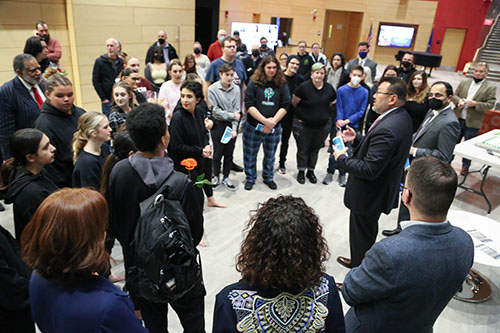
"I work in the (CSCU) system office, but I just want you to know how so very proud I am tonight to be associated with Eastern. First, you all took on a tough topic. Then, you did a superior job in dealing with this topic. You told this story like no one else can. What you did tonight cannot be repeated. It was beautiful the way you all blended the different mediums together—mixing the narration with the music, the poetry, the lighting, the costumes, the archived newspaper stories, the historic videos, the interviews of Tulsa massacre survivors, the dancing and choreography. You put it all together well, to tell the beauty and agony of this story. Again, thank you so very much. You presented a stellar performance."
Donaghy, a key collaborator in the production, used his time living in Greenwood for three weeks last year to inspire his poetry. “I was not prepared for how and what I felt there,” said Donaghy. “I was overwhelmed with the sense of the area as both consecrated ground and an active crime scene. While violent acts I had read and heard about flooded my mind, I was also struck by another kind of violence: the violence of erasure.
“Through this collaboration project, which includes passages from interviews with survivors by Mary E. Jones Parrish and Eddie Faye Gates, we’ve attempted to bring the whole story of Greenwood to the forefront of a cultural conversation on the Eastern campus and beyond.”
Bright-Holland said that the commemoration of the massacre is a form of education. “We offer the embodied words of survivors to help us remember this part of our history, in the form of an interdisciplinary artistic offering created to educate future generations,” said Bright-Holland. “There can be no equity or social justice with respect to such historical trauma without acknowledgement and restoration of its events to the living memory of America.”



